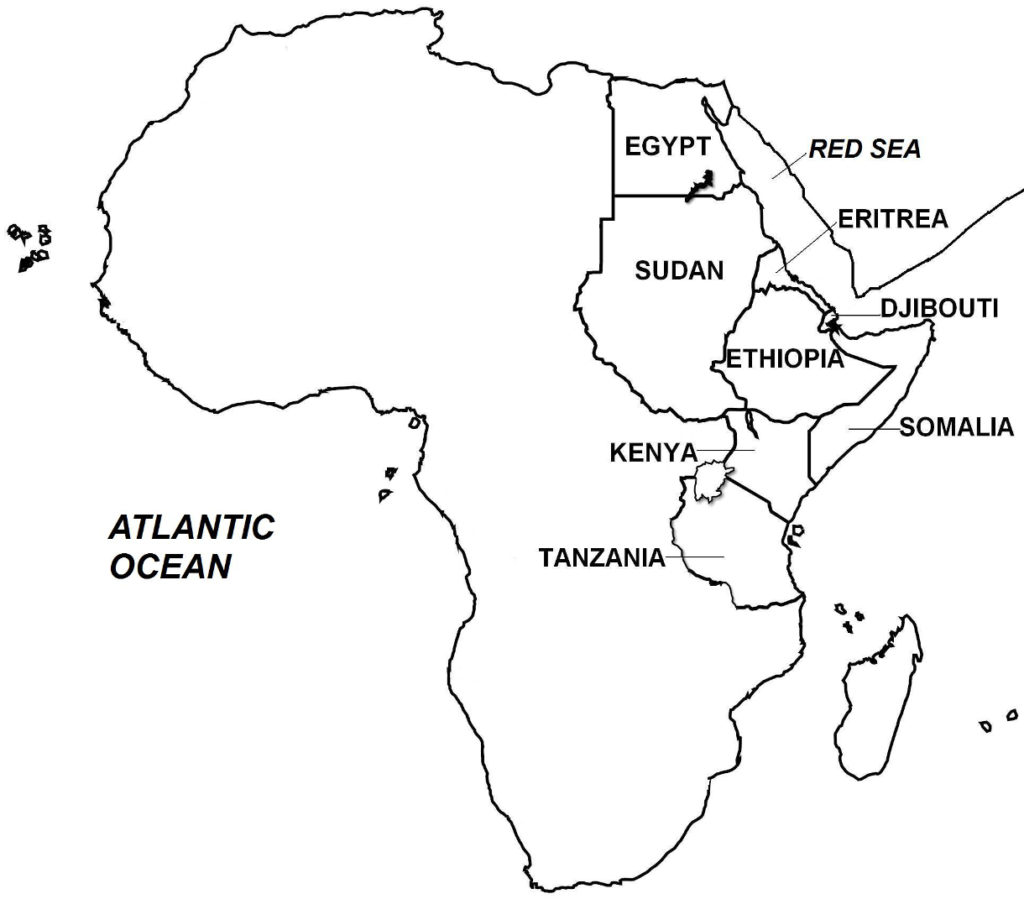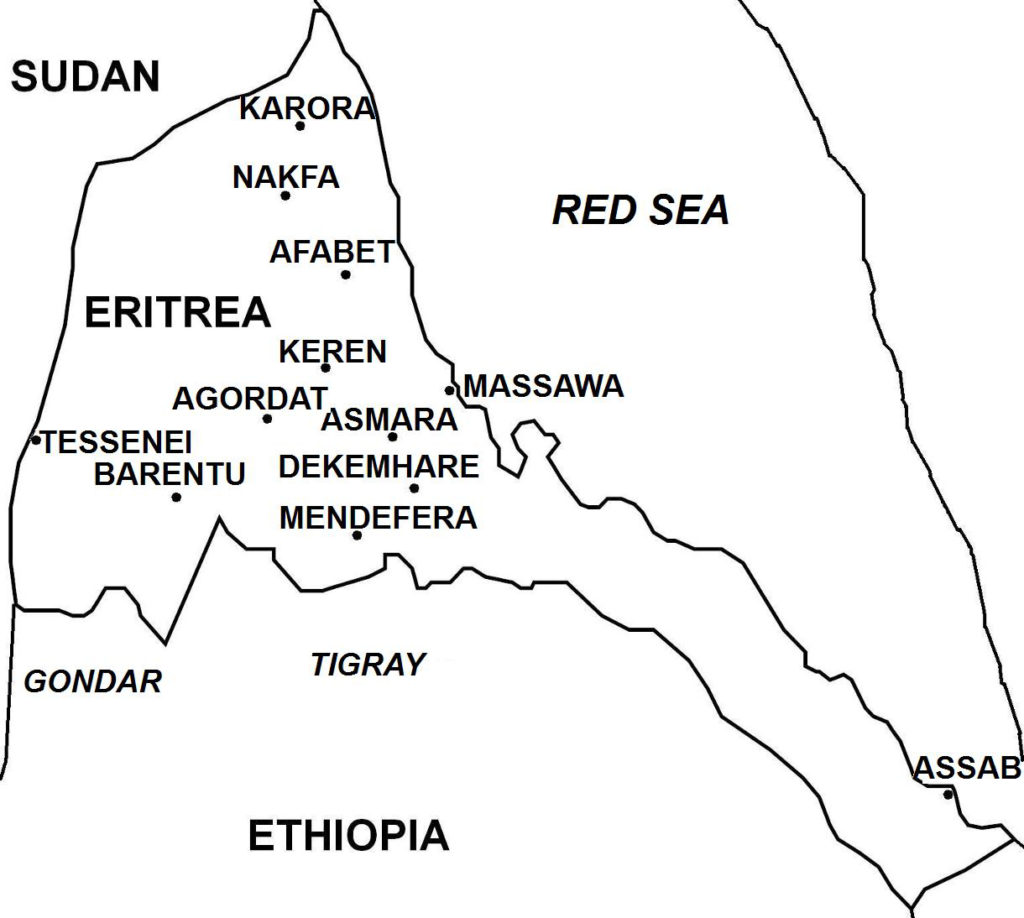On May 24, 1991, Eritrea gained its independence from Ethiopia following a 30-year armed revolution. Ethiopia had annexed Eritrea as a province in November 1962, inciting Eritrean nationalists to launch a rebellion.

Following the war, as Eritrea was still legally bound as part of Ethiopia, in early July 1991, at a conference held in Addis Ababa, an interim Ethiopian government was formed, which stated that Eritreans had the right to determine their own political future, i.e. to remain with or secede from Ethiopia.

Then in a UN-monitored referendum held in April 23 and 25, 1993, Eritreans voted overwhelmingly (99.8%) for independence; two days later (April 27), Eritrea declared its independence. In May 1993, the new country was admitted as a member of the UN.
(Excerpts taken from Eritrean War of Independence – Wars of the 20th Century – Volume 4)
Background In September 1948, a special body called the Inquiry Commission, which was set up by the Allied Powers (Britain, France, Soviet Union, and United States), failed to establish a future course for Eritrea and referred the matter to the United Nations (UN). The main obstacle to granting Eritrea its independence was that for much of its history, Eritrea was not a single political sovereign entity but had been a part of and subordinate to a greater colonial power, and as such, was deemed incapable of surviving on its own as a fully independent state. Furthermore, various countries put forth competing claims to Eritrea. Italy wanted Eritrea returned, to be governed for a pre-set period until the territory’s independence, an arrangement that was similar to that of Italian Somaliland. The Arab countries of the Middle East pressed for self-determination of Eritrea’s large Muslim population, and as such, called for Eritrea to be granted its independence. Britain, as the current administrative power, wanted to partition Eritrea, with the Christian-population regions to be incorporated into Ethiopia and the Muslim regions to be assimilated into Sudan. Emperor Haile Selassie, the Ethiopian monarch, also claimed ownership of Eritrea, citing historical and cultural ties, as well as the need for Ethiopia to have access to the sea through the Red Sea (Ethiopia had been landlocked after Italy established Eritrea).
Ultimately, the United States influenced the future course for Eritrea. The U.S. government saw Eritrea in the regional balance of power in Cold War politics: an independent but weak Eritrea could potentially fall to communist (Soviet) domination, which would destabilize the vital oil-rich Middle East. Unbeknown to the general public at the time, a U.S. diplomatic cable from Ethiopia to the U.S. State Department in August 1949 stated that British officials in Eritrea believed that as much as 75% of the local population desired independence.
In February 1950, a UN commission sent to Eritrea to determine the local people’s political aspirations submitted its findings to the United Nations General Assembly (UNGA). In December 1950, the UNGA, which was strongly influenced by U.S. wishes, released Resolution 390A (V) that called for establishing a loose federation between Ethiopia and Eritrea to be facilitated by Britain and to be realized no later than September 15, 1952. The UN plan, which subsequently was implemented, allowed Eritrea broad autonomy in controlling its internal affairs, including local administrative, police, and fiscal and taxation functions. The Ethiopian-Eritrean Federation would affirm the sovereignty of the Ethiopian monarch whose government would exert jurisdiction over Eritrea’s foreign affairs, including military defense, national finance, and transportation.
In March 1952, under British initiative, Eritrea elected a 68-seat Representative Assembly, a legislature composed equally of Christians and Muslim members, which subsequently adopted a constitution proposed by the UN. Just days before the September 1952 deadline for federation, the Ethiopian government ratified the Eritrean constitution and upheld Eritrea’s Representative Assembly as the renamed Eritrean Assembly. On September 15, 1952, the Ethiopian-Eritrean Federation was established, and Britain turned over administration to the new authorities, and withdrew from Eritrea.
However, Emperor Haile Selassie was determined to bring Eritrea under Ethiopia’s full authority. Eritrea’s head of government (called Chief Executive who was elected by the Eritrean Assembly) was forced to resign, and successors to the post were appointed by the Ethiopian emperor. Ethiopians were appointed to many high-level Eritrean government posts. Many Eritrean political parties were banned and press censorship was imposed. Amharic, Ethiopia’s official language, was imposed, while Arabic and Tigrayan, Eritrea’s main languages, were replaced with Amharic as the medium for education. Many local businesses were moved to Ethiopia, while local tax revenues were sent to Ethiopia. By the early 1960s, Eritrea’s autonomy status virtually had ceased to exist. In November 1962, the Eritrean Assembly, under strong pressure from Emperor Haile Selassie, dissolved the Ethiopian-Eritrean Federation and voted to incorporate Eritrea as Ethiopia’s 14th province.
Eritreans were outraged by these developments. Civilian dissent in the form of rallies and demonstrations broke out, and was dealt with harshly by Ethiopia, causing scores of deaths and injuries among protesters in confrontations with security forces. Opposition leaders, particularly those calling for independence, were suppressed, forcing many to flee into exile abroad; scores of their supporters also were jailed. In April 1958, the first organized resistance to Ethiopian rule emerged with the formation of the clandestine Eritrean Liberation Movement (ELM), consisting originally of Eritrean exiles in Sudan. At its peak in Eritrea, the ELM had some 40,000 members who organized in cells of 7 people and carried out a campaign of destabilization, including engaging in some militant actions such as assassinating government officials, aimed at forcing the Ethiopian government to reverse some of its centralizing policies that were undercutting Eritrea’s autonomous status under the federated arrangement with Ethiopia. By 1962, the government’s anti-dissident campaigns had weakened the ELM, although the militant group continued to exist, albeit with limited success. Also by 1962, another Eritrean nationalist organization, the Eritrean Liberation Front (ELF), had emerged, having been organized in July 1960 by Eritrean exiles in Cairo, Egypt which in contrast to the ELM, had as its objective the use of armed force to achieve Eritrean’s independence. In its early years, the ELF leadership, called the “Supreme Council”, operated out of Cairo to more effectively spread its political goals to the international community and to lobby and secure military support from foreign donors.
